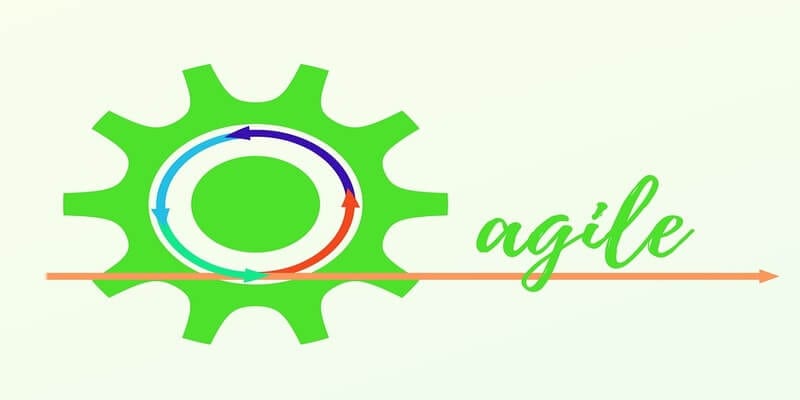How Agile Working Is Changing Talent Practice


Written by Ken Charman, CEO of uFlexReward
It is no longer possible for companies of any size to ignore the burgeoning freelance market and the impact that the gig economy will have on the Future of Work. All of the statistics show that these trends are on the rise. According to Morgan Stanley, freelance growth has outpaced overall employment growth in the UK, France and the Netherlands, while the number of freelancers in the EU doubled between 2000 and 2014. The report also suggests that freelance workers could make up 50% of the workforce in the USA within the next ten years.
These figures might scare or embolden CEOs in equal measure, depending on how well they understand these trends and how willing they are to embrace them. Wherever they sit on this spectrum, what matters most is a CEO’s ability to capitalize on this change through the mechanism of agile working.
This emerging approach, which empowers employees to achieve business outcomes without defining strict processes for how it occurs, is being implemented by those organizations that do not want to be left behind by shifting demographics. It enables them to not only enjoy the benefits of a flexible, borderless workforce but also encourages them to immerse themselves in the data and technology required to embrace this change.
What is Agile Working?
Agile working is different to flexible working, while both enable employees to take advantage of remote working and the freedom to choose working hours, agile working is a broader approach that is built around achieving the objectives of an organization as a first priority. The Agile Organization describes it in the following way:
“Agile working is about bringing people, processes, connectivity and technology, time and place together to find the most appropriate and effective way of working to carry out a particular task. It is working within guidelines (of the task) but without boundaries (of how you achieve it).”
This emphasis on objective-oriented patterns of work as opposed to narrow, role-focused hierarchies is crucial to agile working and it requires all employees to take a responsible, entrepreneurial approach to their career.
Agile Working & The Future of Work
While agile working begins with the needs of an organization, it results in many benefits for employees who are empowered to achieve collective aims without restrictions on how this happens. Employees are therefore able to work from wherever and whenever they choose, as long as their objectives are met.
For businesses, this approach to working enables them to develop new revenue generation models that take advantage of distributed talent. Organizations can employee highly skilled individuals from around the world who are able to collaboratively come together to achieve collective aims and then disperse when objectives are complete. To some this may sound dangerously close to the world of zero hour contracts that has plagued some parts of the UK according to a recent Newsnight report on the Future of Work.
The report stated that the majority of poor people now have someone in the family in work, while the proportion of low income men working part time grew from 5% in 1994 to 20% in 2014. At the same time though, it is also clear that remote working appeals to millenials and helps to keep older workers in the workforce.
Businesses that embrace agile working as part of their approach to the gig economy and the Future of Work need to do so in a responsible way if they are to see the full benefits. They will find they have less fixed, full time employees and less standard roles and career paths. To make the most of this transition, they will need to use technology to access a global network of talent and to provide the skills that employees require.

What Does This Mean for Talent Practice?
As Professor Diane Coyle of Cambridge University states in the Newsnight report, a solution may be found in “a platform that connects lots of people who may be in different places…and which involves the delivery of skills that people need to have power in the labor market.”
Rather than diminishing the role of employees, this tech-enabled future will increase their importance as the need for highly skilled talent is crucial to agile working. Talent practices within global multinationals will be tasked with managing and developing a borderless workforce that can collaboratively achieve collective objectives. Strict job roles will be lost in favour of skills and relevant experience.
Therefore, talent practices will also need to take responsibility for reskilling staff. With tech skills currently understood to have a half life of just two years, talent practices will need to reskill staff regularly, using technology platforms to make that possible within a distributed workforce. Not only that, they must encourage the sort of creative and experimental mindset that is needed within an agile working environment, so that employees can test and learn which approach works best to achieve an organisation’s objectives.
What Agile Means for Reward
With traditional specialist job descriptions being replaced by packages of skills that meet a demand within a specific team, the traditional reward hierarchy based on progression up the grades of a specialist career ladder will be lost. Reward will be negotiated on an individual contextualised basis. Talent will need to be managed through a digital reward policy system, that can compare the market rate across any cocktail of skills, or it will quickly descend into a chaos of one-off local deals.
Reward Technology Enables Change
For the agile worker to be truly empowered, they need to have data at their fingertips. That’s because data enables them to make decisions and it is decision making that singles the agile worker out from the crowd. With data at their fingertips and a clear understanding of organizational objectives in mind, agile workers can make decisions about the most efficient and productive way to achieve business goals.
In order to do this in as holistic a way as possible, they need access to their total rewards breakdown, so they can customise their financial rewards and their employment benefits to best suit their agile working processes. To make this possible, talent practices will have to embrace an agile working transformation of their own, using data and technology to test hypotheses about how they can make the most of the growing gig economy.
Looking for more? Download our Talent Management Buyers Guide for free to compare the top-24 products available on the market with full page vendor profiles, key capabilities, a talent management market overview, our bottom line analysis, and questions for prospective buyers.



















